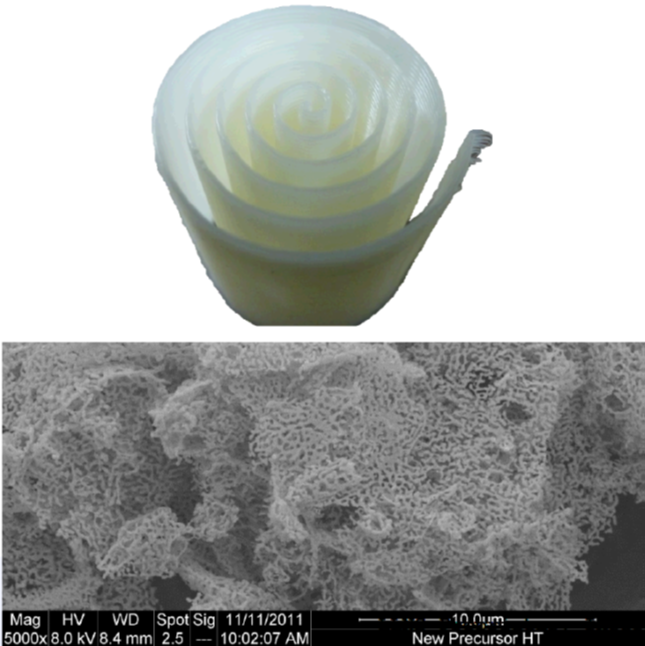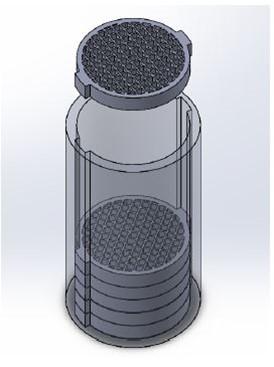HEPA (High Efficiency Particulate Air) filtration is an air treatment technology for removing ultra-fine particles from an air stream. A conventional filter consists of a large sheet of corrugated filter medium sealed in a filter housing. The corrugated structure increases surface area of the media and reduces the pressure drop across the filter. Although very expensive metal HEPA filters exist, typically the filter medium is non-woven paper, polymer, or fiberglass microfibers. These materials degrade under non-ambient conditions, which limits their use in industrial high temperature, corrosive and flammable settings, where a leak could cause serious hazards. LLNL has invested over a decade in the design of ceramic HEPA filters for the nuclear industry to address fire and corrosion concerns. The advantage of ceramic nanofibrous structures, including 3D-printed structures has been clear to LLNL researchers. However, the technology development lags behind the technology of developing nanofibrous materials of other compositions. The main challenge for developing the ceramic materials is shrinkage and embrittlement associated with the thermal treatments required to convert pre-ceramic precursors into ceramics.
LLNL researchers developed a novel method in preparing the ceramic nanofibrous material, which are used to attract and hold particles as well as unique filter designs. The ceramic fibers are prepared via electro spinning to make sheets of nanofibers. The sheets can then be formed into tubes of high surface area. Randomly packed tubular structures can be incorporated into segments of a filter pack for fluid (air or water) treatment applications. Alternatively, 3D printing techniques can be used to create novel grid like arrangements of ceramic filters with high surface area, which can be arranged in multiple filter stacks while maintaining a low pressure drop across the filter pack.
Left Image: Top: rolled hollow cylinder fiber. Bottom: SEM image of porous ceramic material; Right Image: Stacked filters composed of ceramic fibers
- Can be used in harsh environments - inherent properties of ceramics including fire and corrosion resistance.
- Novel nanofiber forming process allows for the selection of chemical, thermal, electrical, magnetic, and optical properties of the ceramic nanofibers for different applications of interest.
- High surface-to-volume ratio of the ceramic nanofibers
- A variety of ceramics can be implemented into the filter pack.
- Optimized arrangement/stacking of filters can lower pressure drop through the filter pack.
- The innovative fiber design limits product loss, lowering cost; the self-supporting geometry can shrink freely, unlike the commonly used substrates that cause tearing or cracking.
- The geometry of mini tube structures provides better strength compared to a conventional membrane. The rolled ring structures have thicker walls, allowing for the support of higher stresses before failure occurs.
- Filtration
- Fluid treatment
- HEPA filters in extreme environments
- Gas treatment
- Porous ceramics
Current stage of technology development: TRL 3
LLNL has patent(s) on this invention.
U.S. Patent No. 11878261 System and method for engineered ceramic packages for use in fluid treatment technologies published 1/23/2024
U.S. Patent No. 11439932 System and method for engineered ceramic packages for use in fluid treatment technologies published 9/13/2022.
U.S. Patent No. 11433331 System and method for engineered ceramic packages for use in fluid treatment technologies published 9/6/2022


